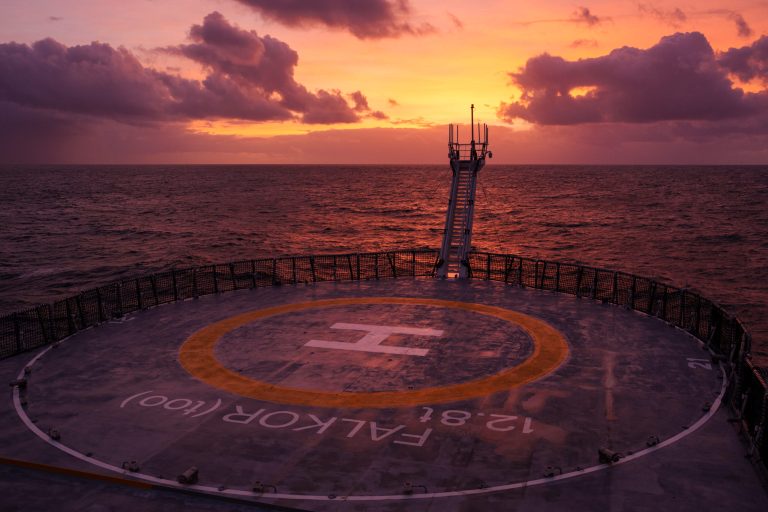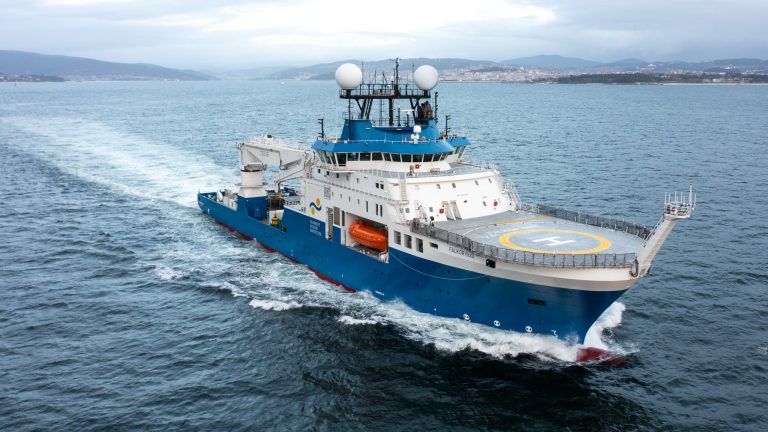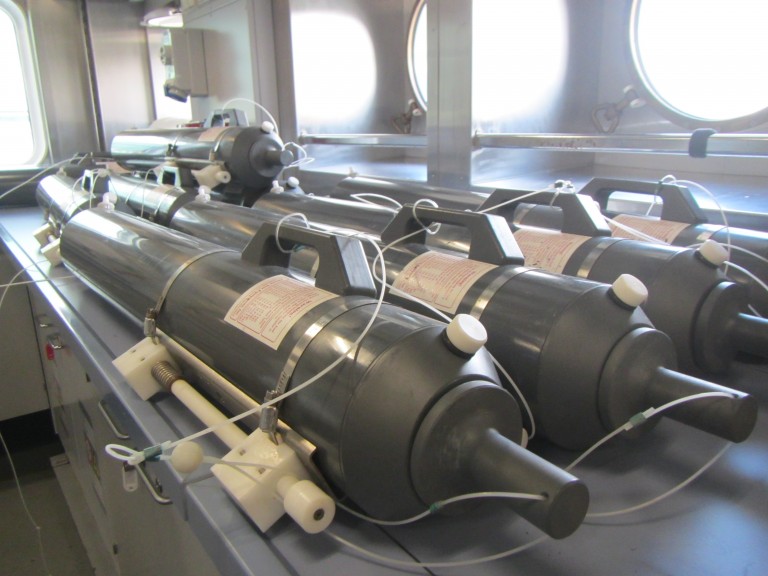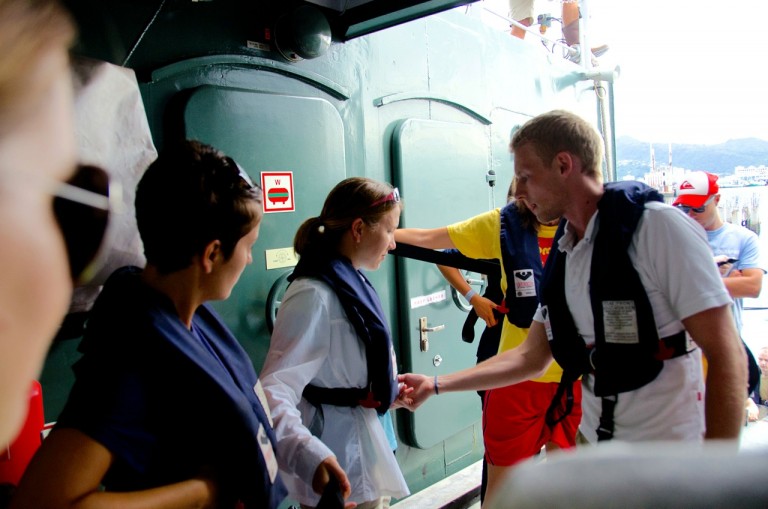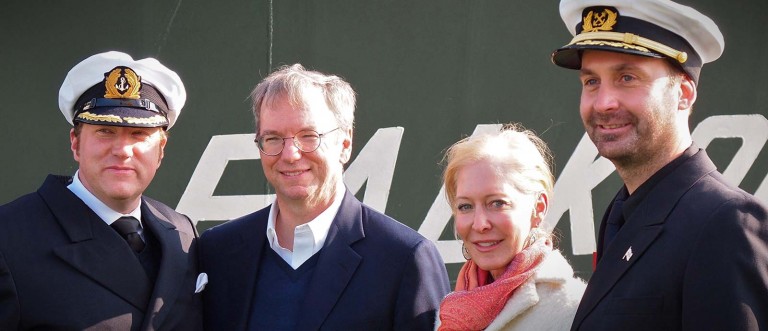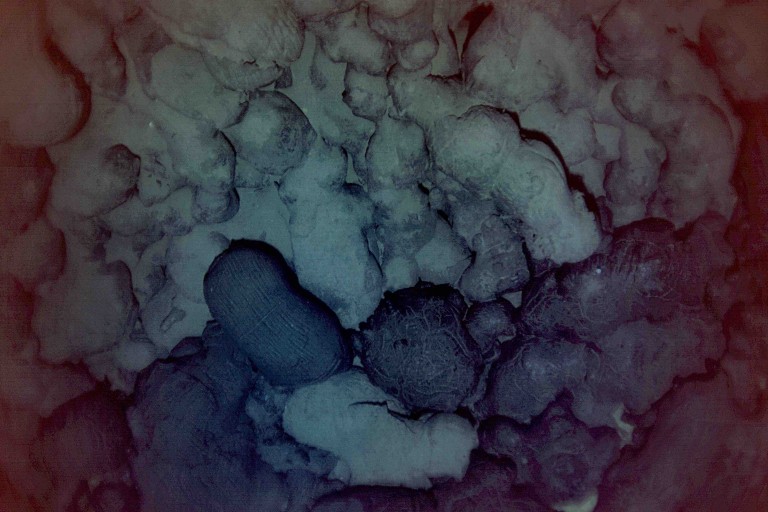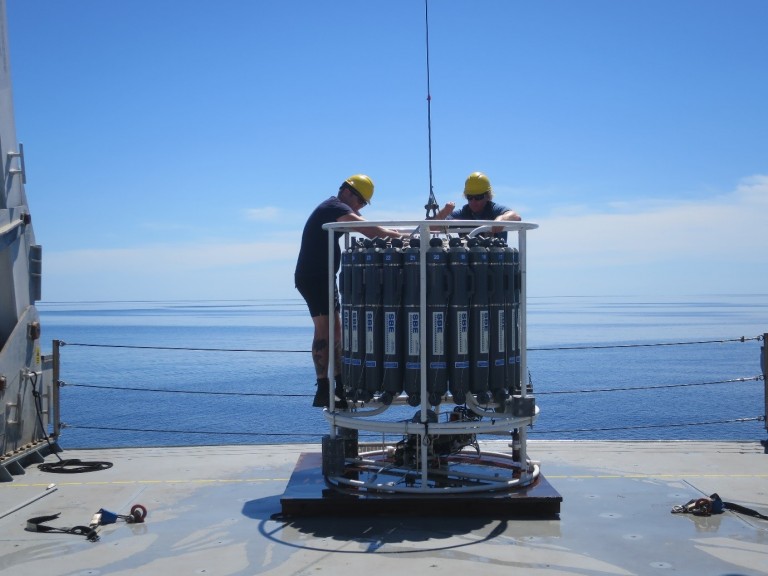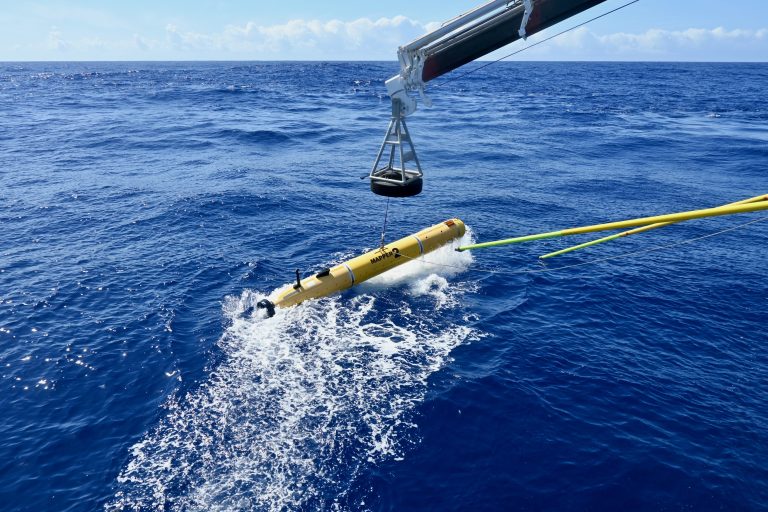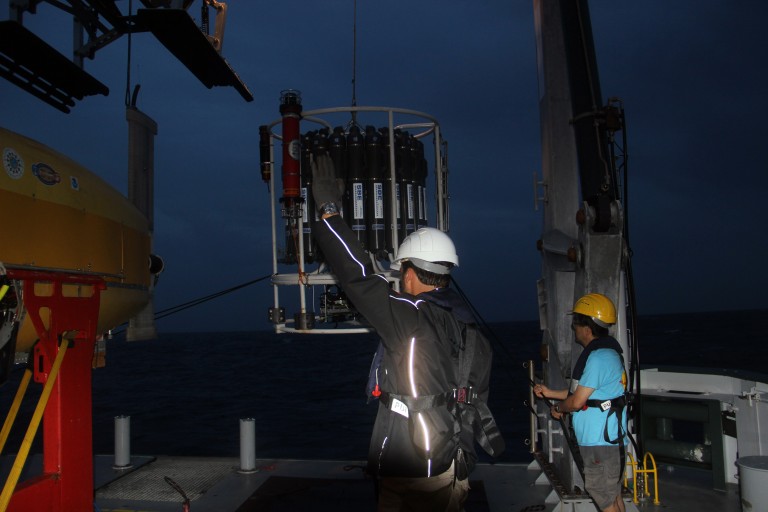Page: Launch & Recovery Systems
R/V Falkor (too) Working Decks and Deployment Systems The vessel provides a tremendous amount of space and tools for deploying systems to study the ocean. The 900 square meter (9,678 square feet) aft deck hosts the large moon pool, and winches and frames for over-the-side deployments. The vessel's 20.9 meter diameter helideck can support vertical … Continued
